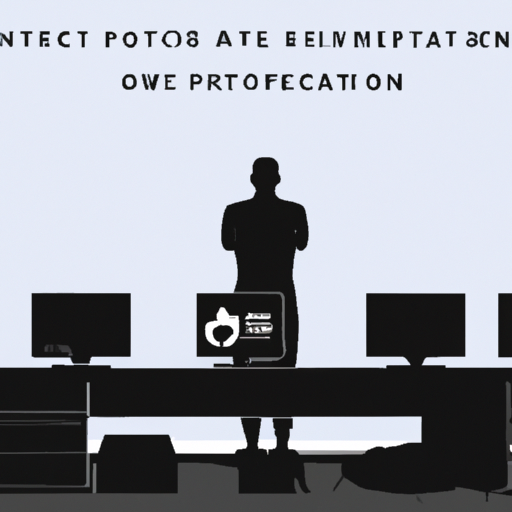How Can We Enhance The Resilience Of Our Critical Business Applications?
In today’s fast-paced, ever-changing business landscape, ensuring the resilience of our critical business applications has become more crucial than ever. With the increasing reliance on technology and the potential for disruptions, it is essential to explore effective strategies to enhance the resilience of these applications. By implementing robust backup and recovery solutions, implementing redundancy and failover mechanisms, and investing in proactive monitoring and maintenance, we can minimize downtime, increase business continuity, and ultimately safeguard the success of our operations. In this article, we will delve into these strategies and provide practical tips to help you enhance the resilience of your critical business applications.
Building a Robust Infrastructure
Implementing Redundancy
To enhance the resilience of your critical business applications, it is essential to implement redundancy in your infrastructure. Redundancy refers to having backup systems or resources in place to ensure the availability of your applications even in the event of a failure. This can be achieved by employing redundant servers, network connections, power supplies, and storage solutions. By duplicating critical components, you can significantly reduce the risk of downtime and increase the reliability of your infrastructure.
Ensuring Scalability
Scalability is another crucial factor in enhancing the resilience of your critical business applications. As your business grows, your infrastructure needs to be able to handle the increasing workload efficiently. By designing your infrastructure in a scalable manner, you can ensure that it can accommodate the expanding demands without sacrificing performance or availability. This can be achieved through the use of load balancing techniques, vertical or horizontal scaling, and by adopting cloud-based solutions that offer elastic resources.
Investing in High-Quality Hardware
Investing in high-quality hardware is essential for enhancing the resilience of your critical business applications. By using reliable and robust equipment, you can minimize the risk of hardware failures and ensure the stability of your infrastructure. When selecting hardware components, consider factors such as reliability, performance, and support. It is also important to regularly maintain and upgrade your hardware to keep it in optimal condition and to take advantage of any advancements in technology that can further enhance the resilience of your infrastructure.
Securing Data and Networks
Employing Robust Firewall Solutions
Securing your data and networks is paramount in enhancing the resilience of your critical business applications. One of the foundational aspects of securing your infrastructure is to employ robust firewall solutions. Firewalls act as a barrier between your internal network and external threats, helping to prevent unauthorized access and protecting sensitive data. By implementing firewalls with advanced features such as intrusion detection and prevention systems, you can strengthen the security of your infrastructure and reduce the risk of potential cyberattacks.
Implementing Regular Security Audits
Regular security audits are crucial in identifying vulnerabilities and ensuring the resilience of your critical business applications. These audits involve assessing your infrastructure, networks, and applications for any security weaknesses. By conducting frequent and comprehensive audits, you can uncover potential security risks and take necessary measures to mitigate them. This includes implementing security patches, updating software, strengthening access controls, and educating your workforce about best security practices.
Encrypting Data in Transit and at Rest
To safeguard the confidentiality and integrity of your data, it is essential to encrypt it both in transit and at rest. Data encryption transforms information into ciphertext, making it unreadable to unauthorized users. By implementing encryption mechanisms such as secure socket layer (SSL) or transport layer security (TLS) protocols, you can protect data as it travels across networks. Additionally, encrypting data at rest, such as on storage devices, ensures that even if physical assets are compromised, the data remains secure. Encrypting sensitive data adds an extra layer of protection and enhances the resilience of your critical business applications.
Implementing Backup and Recovery Solutions
Regularly Backing Up Data
Regularly backing up data is crucial in maintaining the resilience of your critical business applications. By creating frequent backups of your data, you can ensure that in the event of a failure or data loss, you have a recent copy of your information that can be restored. It is important to establish a backup schedule that aligns with the criticality and frequency of changes in your data. Consider implementing automated backup solutions to streamline the process and minimize the risk of human error.
Testing the Restoration Process
Creating backups is just one part of the equation. To truly enhance the resilience of your critical business applications, it is essential to regularly test the restoration process. Conducting restoration tests ensures that your backups are functioning properly and that you can successfully recover your data in case of a disaster. These tests should simulate real-life scenarios and include different types of failures or data corruptions. By identifying any potential issues or gaps in your backup and recovery procedures, you can make necessary adjustments and improve the overall resilience of your applications.
Implementing Offsite Backup Solutions
In addition to regular backups and restoration testing, implementing offsite backup solutions plays a significant role in enhancing the resilience of your critical business applications. Offsite backups involve storing copies of your data in a remote location that is geographically distinct from your primary infrastructure. This ensures that even if your main data center experiences a catastrophic event, such as a fire or natural disaster, your data remains intact and accessible. Offsite backup solutions can be implemented through the use of cloud storage services or physical backups stored in secure offsite facilities.
Monitoring and Alerting Systems
Implementing Real-time Monitoring Tools
To enhance the resilience of your critical business applications, it is essential to implement real-time monitoring tools. These tools continuously monitor various aspects of your infrastructure, including application performance, server health, network traffic, and security events. By monitoring your systems in real-time, you can proactively identify any potential issues or anomalies and address them before they escalate into larger problems. Real-time monitoring provides valuable insights into the state of your infrastructure, enabling you to make informed decisions and take appropriate actions to maintain the resilience of your applications.
Setting Up Alerting Systems
Setting up alerting systems is an integral part of enhancing the resilience of your critical business applications. Alerting systems notify you when predefined thresholds or conditions are met, indicating a potential issue or a deviation from normal operation. By configuring alerts based on critical metrics or events, you can ensure that you are promptly notified of any disruptions or incidents. Alerting systems can be configured to send notifications via emails, SMS messages, or integrated with incident response platforms to streamline the incident management process.
Establishing Incident Response Procedures
Establishing incident response procedures is essential for effectively managing and minimizing the impact of any disruptions to your critical business applications. Incident response procedures outline steps to be taken in the event of a security incident, system failure, or any other adverse events. These procedures should include roles and responsibilities of individuals involved, communication protocols, escalation paths, and incident documentation processes. By having well-defined incident response procedures in place, you can significantly reduce the downtime and quickly restore the resilience of your applications.
Employing DevOps Principles
Implementing Continuous Integration and Deployment
Adopting DevOps principles and implementing continuous integration and deployment (CI/CD) practices can greatly enhance the resilience of your critical business applications. CI/CD involves automating the processes of code integration, testing, and deployment, ensuring that new changes are quickly and consistently incorporated into the production environment. By automating these processes, you can minimize the risk of human error, reduce the time between releases, and quickly address any issues that may arise. CI/CD practices promote agility, reliability, and ultimately enhance the resilience of your applications.
Automating Testing and QA Processes
Automating testing and quality assurance (QA) processes is vital in enhancing the resilience of your critical business applications. Automated testing allows for comprehensive and consistent testing of various components and functionalities of your applications. By automating tests, you can identify potential issues or bugs early in the development cycle, allowing for timely resolution. This helps to improve the overall quality of your applications and ensures that they are robust and resilient, even under challenging conditions.
Implementing Infrastructure as Code
implementing infrastructure as code (IaC) is a powerful approach for enhancing the resilience of your critical business applications. IaC involves using code and automation tools to define and manage your infrastructure resources. By treating your infrastructure as code, you can version control and track changes, allowing for reproducibility and consistency. This enables you to quickly provision and configure infrastructure components and easily recover from failures or disasters. Implementing IaC promotes agility, reduces manual errors, and enhances the resilience of your applications.
Conducting Regular Business Impact Assessments
Identifying Critical Applications and Dependencies
Conducting regular business impact assessments is crucial in understanding the criticality of your applications and their dependencies. By evaluating the importance of each application and identifying its dependencies on other systems, you can prioritize efforts to enhance their resilience. Critical applications require additional measures to minimize downtime and ensure their availability. Understanding dependencies helps in determining the potential impact of failures or disruptions on your overall business operations and enables you to develop effective mitigation plans.
Assessing Potential Risks and Vulnerabilities
Assessing potential risks and vulnerabilities is essential for enhancing the resilience of your critical business applications. This involves identifying and evaluating any threats or vulnerabilities that could compromise the availability or integrity of your applications. By conducting comprehensive risk assessments, you can prioritize your security efforts and focus on mitigating high-risk areas. Assessing potential risks and vulnerabilities allows you to proactively address any weaknesses in your infrastructure, applications, or processes before they can be exploited.
Developing Mitigation Plans
To enhance the resilience of your critical business applications, it is essential to develop mitigation plans based on the insights gathered from business impact assessments and risk assessments. Mitigation plans outline strategies and countermeasures to minimize the impact of potential disruptions or failures. These plans may include measures such as redundant systems, disaster recovery solutions, security controls, or staff training. By implementing mitigation plans, you can effectively address the identified risks and vulnerabilities and ensure the continuity of your critical business applications.
Establishing Incident Management Procedures
Defining Roles and Responsibilities
Establishing clear roles and responsibilities is crucial in effectively managing incidents and maintaining the resilience of your critical business applications. Each individual involved in incident management should have a clearly defined role, ensuring that there is no ambiguity regarding their responsibilities. These roles may include incident coordinators, technical resources, communication leads, or management representatives. By defining roles and responsibilities, you can streamline the incident management process and ensure prompt and effective resolution of any disruptions or incidents.
Creating Communication Protocols
Creating communication protocols is essential for effective incident management and maintaining the resilience of your critical business applications. Communication protocols outline how information is shared, who needs to be notified, and how updates are communicated during an incident. Clear and efficient communication channels help in coordinating efforts, reducing confusion, and ensuring that all stakeholders are kept informed. Establishing communication protocols in advance enables a swift and coordinated response during incidents, minimizing the impact and facilitating the restoration of services.
Conducting Regular Training and Drills
Regular training and drills are essential for maintaining the resilience of your critical business applications and ensuring that your incident management procedures are effective. Training should be provided to all individuals involved in incident management, covering their roles, responsibilities, and the processes to be followed during an incident. Conducting regular drills or simulated exercises allows your team to practice their incident response procedures in a controlled environment. This helps in identifying any gaps or areas for improvement, ensuring that your team is well-prepared to handle real incidents and maintain the resilience of your applications.
Implementing Load Balancing and Failover Mechanisms
Distributing Workload Across Multiple Servers
Implementing load balancing mechanisms is crucial in enhancing the resilience of your critical business applications. Load balancing distributes incoming network traffic across multiple servers, ensuring that no single server becomes overwhelmed or a single point of failure. By distributing the workload, you can improve performance, optimize resource utilization, and increase the overall availability of your applications. Load balancing can be achieved through hardware load balancers, software load balancers, or by utilizing cloud-based load balancing services.
Implementing Redundant Network Connections
Implementing redundant network connections is another essential aspect of enhancing the resilience of your critical business applications. Redundant network connections provide alternative paths for data to flow, ensuring that network connectivity is maintained even if one connection fails. By utilizing multiple internet service providers (ISPs), diverse network routes, or redundant networking equipment, you can minimize the risk of network outages and ensure uninterrupted access to your applications.
Developing Redundant System Architecture
Developing redundant system architecture is crucial in maintaining the resilience of your critical business applications. Redundancy at the system level involves duplicating critical components, such as servers, storage, or databases, to ensure that there are backups in place in case of failures. By implementing redundant system architecture, you can significantly reduce the risk of single points of failure and improve the overall availability and reliability of your applications. Redundancy can be achieved through clustering, replication, or by utilizing failover mechanisms.
Regularly Updating and Patching Systems
Implementing a Patch Management Strategy
Regularly updating and patching systems is essential for enhancing the resilience of your critical business applications. Vulnerabilities in software or system components can be exploited by cybercriminals, leading to potential security breaches or disruptions. Implementing a patch management strategy ensures that you stay up to date with the latest security patches and updates released by vendors. This strategy should include regular patch assessments, testing, and scheduled patch deployments to minimize the risk of vulnerabilities being exploited.
Keeping Software, Firmware, and Hardware Up to Date
In addition to implementing a patch management strategy, keeping all software, firmware, and hardware up to date is crucial for maintaining the resilience of your critical business applications. Regularly updating these components ensures that you have access to the latest features, bug fixes, performance improvements, and security enhancements. Outdated software, firmware, or hardware may contain vulnerabilities that can be targeted by attackers or result in compatibility issues that can impact the stability and availability of your applications.
Performing Regular Vulnerability Scans
Performing regular vulnerability scans is an important step in enhancing the resilience of your critical business applications. Vulnerability scans assess your infrastructure and applications for potential weaknesses or vulnerabilities that could be exploited by attackers. By conducting these scans, you can identify any security gaps and take appropriate actions to mitigate them. Vulnerability scanning should be performed regularly to ensure that new vulnerabilities are promptly identified and addressed, helping you maintain the resilience of your applications.
Documenting Processes and Procedures
Creating Detailed Runbooks
Creating detailed runbooks is essential for maintaining the resilience of your critical business applications. Runbooks serve as comprehensive guides that outline step-by-step procedures to perform various tasks or processes. By documenting processes in detail, you enable consistency and clarity when it comes to executing critical operations. Runbooks should cover a wide range of scenarios, including disaster recovery procedures, backup and restoration processes, system maintenance tasks, and incident management procedures. Regularly updating and reviewing runbooks ensures that they remain up to date and continue to provide valuable guidance.
Documenting Maintenance and Recovery Processes
Documenting maintenance and recovery processes is crucial in ensuring the resilience of your critical business applications. These documents outline the necessary steps to be followed during routine maintenance activities, such as software updates or hardware replacements. Additionally, they provide guidance on how to recover from incidents or disasters, ensuring that your applications can be quickly restored to their normal state. By documenting maintenance and recovery processes, you standardize the procedures and facilitate efficient and effective execution when needed.
Establishing Change Control and Versioning Practices
Establishing change control and versioning practices is essential for maintaining the resilience of your critical business applications. Change control processes ensure that any modifications or updates to your infrastructure or applications are carefully planned, tested, and approved before being implemented. This helps to minimize the risk of introducing unintended consequences or disruptions. Versioning practices involve tracking and managing changes to software, configurations, or infrastructure, allowing for easy identification and rollback to previous stable states if needed. By implementing change control and versioning practices, you maintain control over your environment and enhance the resilience of your applications.
In conclusion, enhancing the resilience of your critical business applications requires a holistic approach that encompasses various aspects of your infrastructure, security, backup, monitoring, and incident management processes. By implementing redundancy, ensuring scalability, investing in high-quality hardware, securing data and networks, implementing backup and recovery solutions, monitoring and alerting systems, employing DevOps principles, conducting regular assessments, establishing incident management procedures, implementing load balancing and failover mechanisms, regularly updating and patching systems, and documenting processes, you can significantly enhance the resilience of your critical business applications. Remember, resilience is not a one-time effort but an ongoing commitment to continuously improving and adapting to evolving challenges to ensure the stability and availability of your applications.








